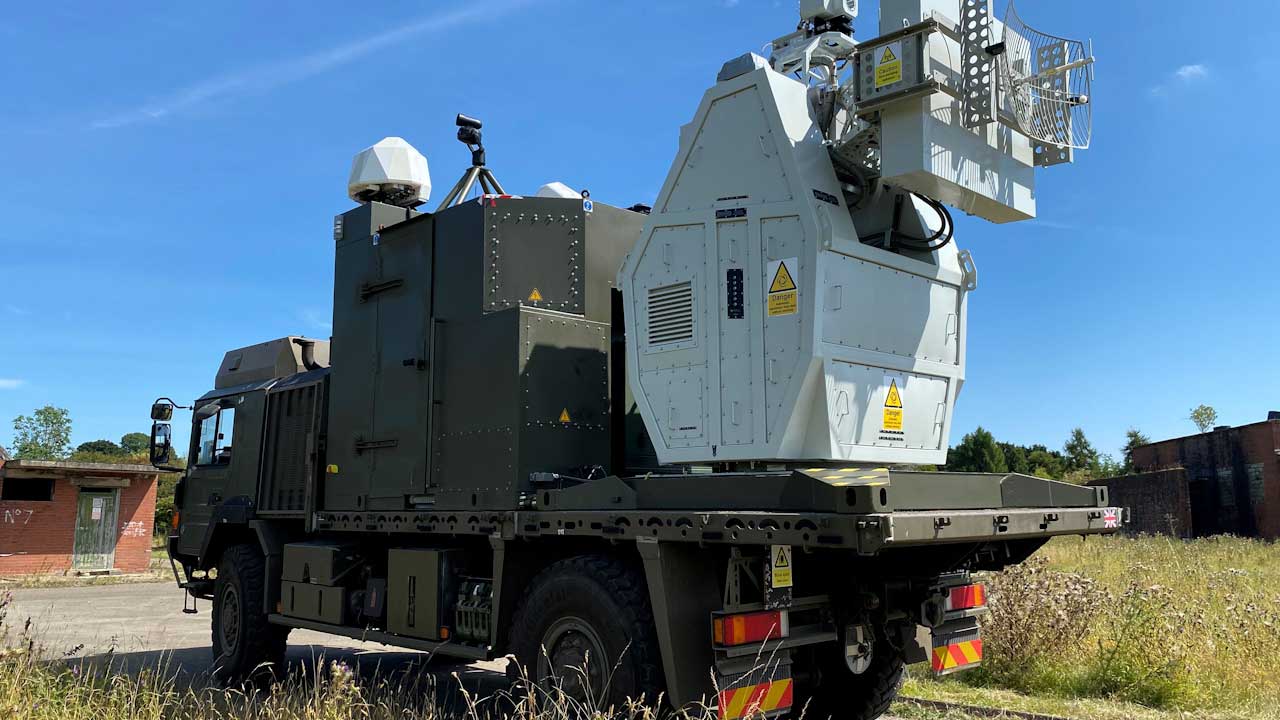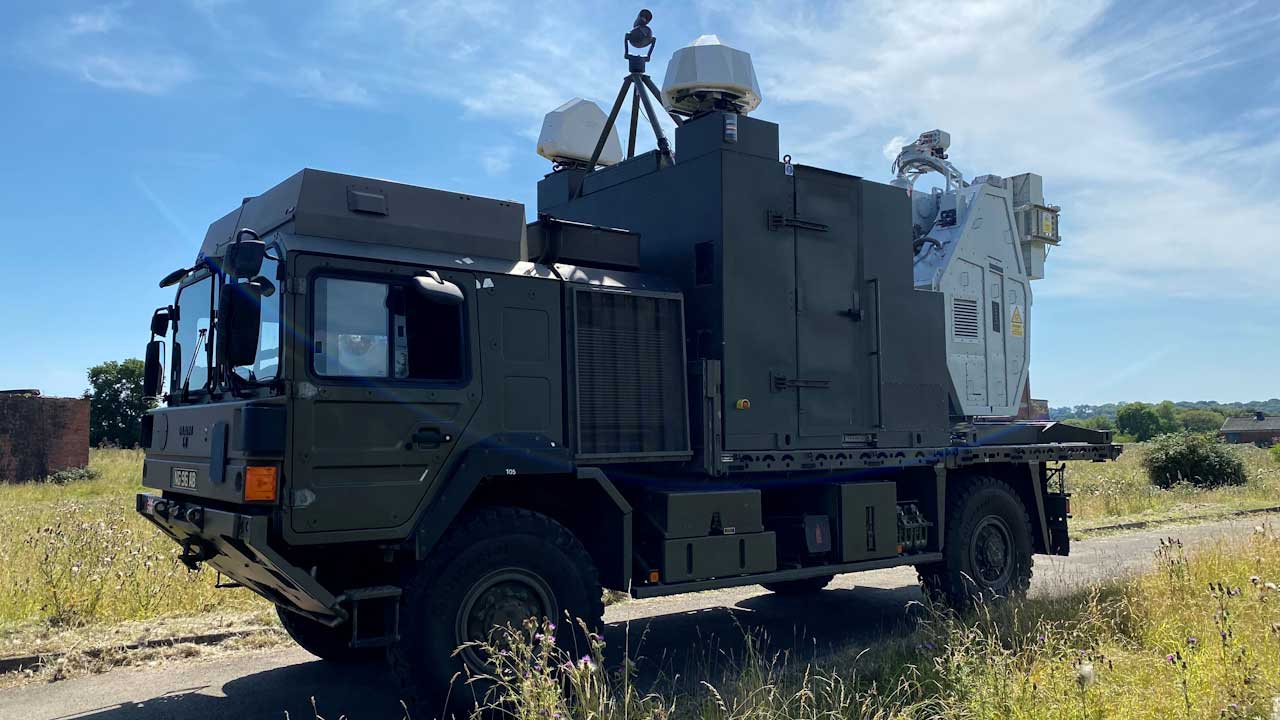UK trials 'game changing' drone swarm killing weapon that costs 13 cents a shot — RFDEW uses radio waves to down drones
The RFDEW drops drones from the sky at a cost of just 13 cents per target.

The UK’s Ministry of Defence has announced successful trials of a “game-changing weapon that can take down a swarm of drones using radio waves.” The new vehicle-mounted Radio Frequency Directed Energy Weapon (RFDEW) can devastate a wave of drones from up to a kilometer away (about 1,094 yards) at a cost of only about 10p (13 cents) per downed device.
With this news release so close to Christmas, the MoD quipped that the RFDEW could take down a drone swarm “for less than the cost of a pack of mince pies.” These are an unusual seasonal sweet treat packed with fruit, spices, and suet, sold in the British Isles at this time of year.
Last week, we covered the news that the British Army had successfully tested a Wolfhound high-energy laser weapon system (HELWS). That drone elimination weapon leveraged a high-energy laser to sense and track enemy drones, concentrating a laser beam on them until they were destroyed. The HELWS was said to have been a great success in the trials.

Though the laser-based HELWS system was said to be 100% effective in trials, its description provoked questions about its drone-killing capacity. In other words, and as Tom’s Hardware readers highlighted, what if there’s a drone swarm to deal with? Hopefully, the RFDEW answers those real concerns with its completely different drone-neutralizing tech.
The MoD press release explains that “the weapon uses high-frequency waves to disrupt or damage critical electronic components inside devices such as drones, causing them to be immobilized or fall out of the sky.” It also claims that RFDEW can be effective against land—or sea-based drones. Like the HELWS, the RFDEW was tested at a range in West Wales.
We’ve already mentioned the low cost per enemy drone downed touted for the RFDEW. It is also thrifty about human labor. The system is highly automated and requires only a single operator, says the MoD. Moreover, it is flexible in terms of deployment and easily mounted onto a military vehicle, as pictured.
We’ve seen the war in Ukraine emerge as one where drones have become a major force for both sides. Ukrainian drone makers have even been using ChatGPT to optimize drone bomb designs. Drones have also been disrupted outside of war zones, so authorities having access to equipment adept at dealing with either individual or swarms of drones has become increasingly important worldwide. With this in mind, it is good to see the UK developing and successfully testing a range of anti-drone measures, which allies could share.
Get Tom's Hardware's best news and in-depth reviews, straight to your inbox.

Mark Tyson is a news editor at Tom's Hardware. He enjoys covering the full breadth of PC tech; from business and semiconductor design to products approaching the edge of reason.
-
why_wolf It doesn't even need to be a "swarm" the standard deployment of front line drones seems to be 3. 1 spotter and 2 kamikaze drones. So any anti-drone system meant for the battlefield needs to be able to take out at least 3 drones in very quick succession. Otherwise it will simply be destroyed.Reply -
Flyfisherman When fiction meet science.Reply
It´s like the game Tom Clancys Gost Recon Breakpoint from 2019.
Yeah the warfare drones and AI swarm drones acting as a unit, which is developed today by Swedish Saab’s Autonomous Swarm technology .The war in Ukraine changed the map, literally.
Best regards from Sweden -
AkroZ It's rather easy to protect electronics from radio waves, originaly PC towers are made of metal to have a mass protecting the electronic from radio waves.Reply -
bit_user Reply
These are drones, which need to be very light-weight, or else it will significantly compromise their range and/or payload capacity. So, I think it's not easy to add sufficient shielding to them.AkroZ said:It's rather easy to protect electronics from radio waves, originaly PC towers are made of metal to have a mass protecting the electronic from radio waves. -
Heat_Fan89 I like this YT video about the future of drones.Reply
O-2tpwW0kmUView: https://www.youtube.com/watch?v=O-2tpwW0kmU -
USAFRet Reply
Regarding an object that needs to fly, no, its not 'rather easy'.AkroZ said:It's rather easy to protect electronics from radio waves, originaly PC towers are made of metal to have a mass protecting the electronic from radio waves.
More mass = less payload and/or less range and/or less speed and/or less maneuverability. -
Co BIY Given an effective range of 1 km x 2,295 km length of the Ukrainian-Russian border that'll take a few units. Equivalent to a lot of meat pies.Reply
Interesting tech, detecting and tracking the drones seems the biggest challenge. The instantaneous effect of an RF beam or burst would help.
Seems like this sort of development should be kept secret so countermeasures will be slower to evolve but maybe it's a ruse. -
Co BIY ReplyUSAFRet said:Regarding an object that needs to fly, no, its not 'rather easy'.
More mass = less payload and/or less range and/or less speed and/or less maneuverability.
OTOH the vulnerable parts are relatively small (although distributed throughout the drone) and EMP protection is something that I'm sure the Russians have some experience with.